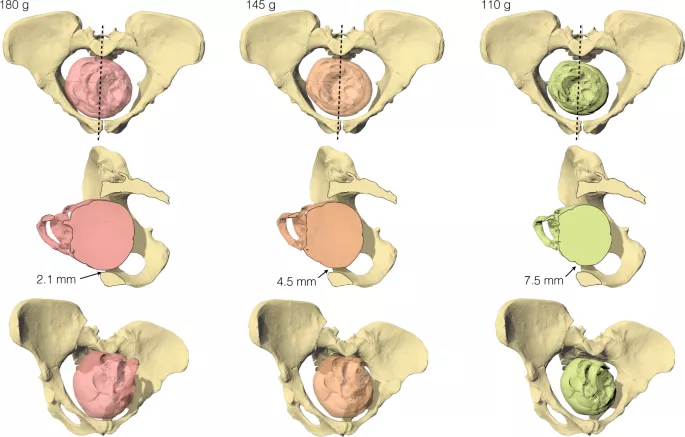A new study It is found that complex human childbirth and cognitive ability are the result of upright walking Complications are common in women during and after pregnancy and childbirth. Most of these problems occur during pregnancy and can be avoided or cured. However, childbirth is still dangerous. The World Health Organization estimates that 830 people die every day from causes related to childbirth and pregnancy. In addition, for every woman who died in childbirth, 20-30 experienced injury, infection or disability.
Four major complications account for 75 per cent of maternal deaths: severe bleeding (usually after birth), infection, high blood pressure during pregnancy and delivery complications. Other common problems include unsafe abortion and chronic diseases such as heart disease and diabetes.
All these indicate that human childbirth is much more difficult and painful than that of great apes. This has long been attributed to the larger human brain and the limited size of the mother's pelvis. Researchers at the University of Zurich now use three-dimensional simulation to show that in early hominids, childbirth is also a very complex process. The newborn brains of these species are relatively small - which has a significant impact on their cognitive development.
During human childbirth, the fetus usually passes through the narrow and tortuous birth canal by bending and rotating its head at different stages. This complex procedure carries a high risk of birth complications, ranging from prolonged labor to stillbirth or maternal death. These problems have long been thought to be the result of the conflict between human adaptation to walking upright and our larger brain.

The dilemma between walking upright and the larger brain
Bipedal walking was developed about 7million years ago. It has greatly reshaped the human pelvis, making it a real birth canal. However, larger brains did not begin to develop until 2million years ago, when the earliest Homo sapiens species emerged. For the dilemma brought about by these two conflicting evolutionary forces, the evolutionary solution is to give birth to newborns with immature and helpless nervous system, whose brains are relatively small -- this situation is called secondary altriciality.
The research team led by Martin h ä usler of the Institute of evolutionary medicine at the University of Zurich and Pierre fr é Mondi è re of the University of Aix Marseille have now found that compared with giant apes, Australopithecus living about 4million to 2million years ago has a complex birth pattern. H ä usler said: "because ancient apes like Lucy have relatively small brains, but have shown morphological adaptability to bipeds, they are ideal for studying the impact of the evolutionary forces of these two conflicts."

Typical ratio of fetal and adult head sizes
Researchers used three-dimensional computer simulations to develop their findings. Since there are no known fossils of newborn Australopithecus, they used different fetal head sizes to simulate the birth process, taking into account the possible range of estimates. Each species has a typical ratio between the brain size of its newborn and that of its adult. Based on the proportion of non-human primates and the average brain size of adult Australopithecus, the researchers calculated that the average brain size of newborns was 180 grams, which would correspond to 110 grams of human brain size.
For their three-dimensional simulation, the researchers also considered the increase in pelvic joint activity during pregnancy and determined a realistic soft tissue thickness. They found that only 110 grams of fetal head size could pass through the pelvic entrance and median plane without difficulty, while 180 grams and 145 grams were different. "This means that Australopithecus newborns are neurologically immature and dependent on help, similar to human infants today," H ä usler explained.
Long term learning is the key to cognitive and cultural ability
These results suggest that Australopithecus probably had a form of cooperative breeding, even before the emergence of Homo sapiens. Compared with apes, their brains develop longer outside the womb, enabling infants to learn from other members of the group. H ä usler said, "such long-term learning is generally considered to be the key to human cognitive and cultural development." This conclusion is also supported by the earliest stone tool records, which can be traced back to 3.3 million years ago - long before the emergence of Homo sapiens.